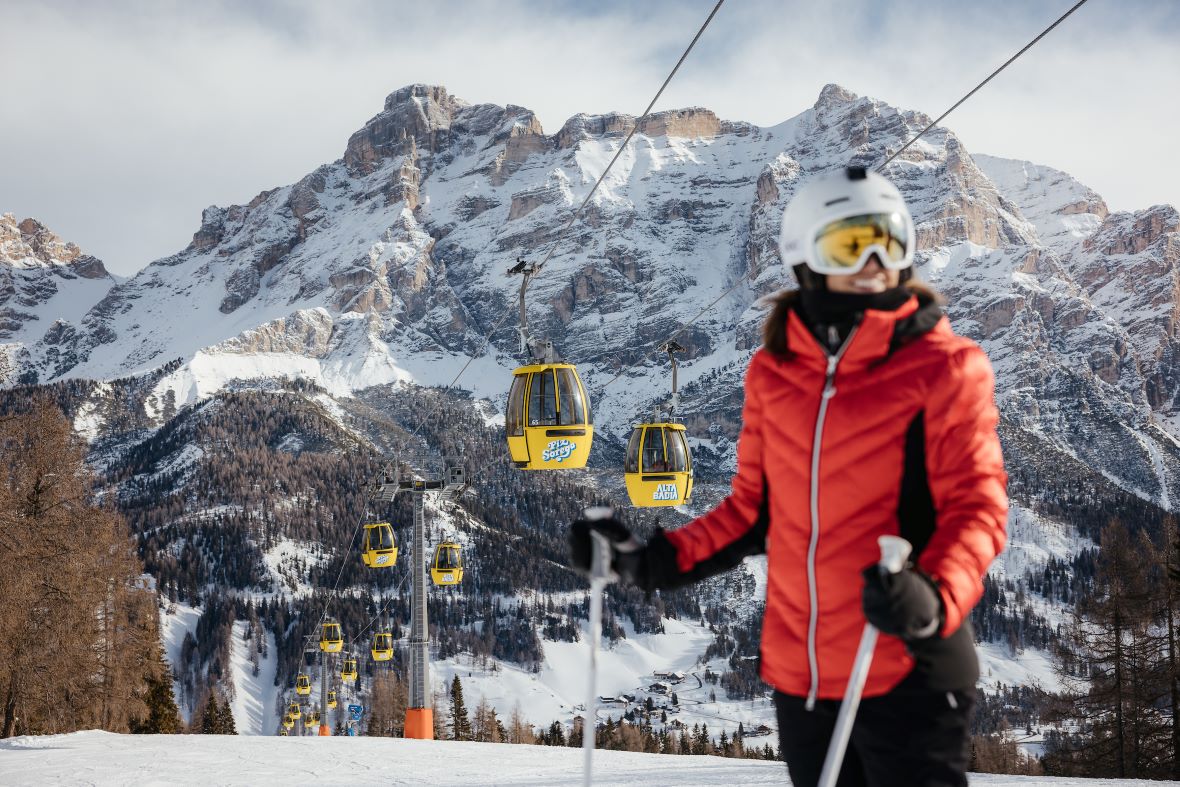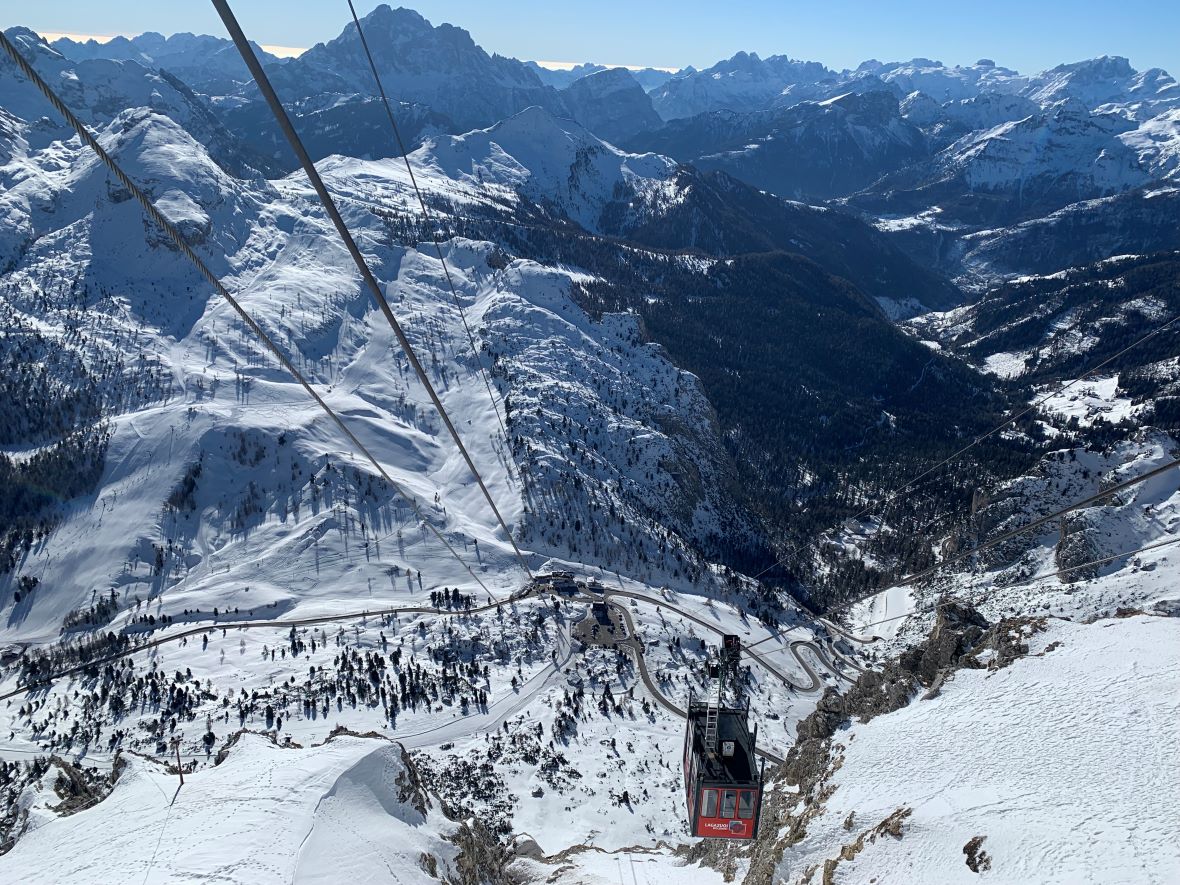Ski Lifts in Alta Badia
Alta Badia’s lift system connects Corvara, Colfosco, La Villa, San Cassiano (including Armentarola), and Badia, and its lift pass also covers the Lagazuoi lift in Cortina d’Ampezzo. The Dolomiti Superski lift pass allows skiers based in Alta Badia to use the Sellaronda circuits to reach Arabba, Val Gardena and Val di Fassa and also ski much deeper into Cortina d’Ampezzo.
Lift System

The Piz Sorega gondola above San Cassiano © Alta Badia_Alex Moling
Both Corvara and Colfosco benefit from having several lift stations in and around the resorts, with lifts heading off in different directions. This helps to dissipate the early morning rush.
Most of the ski lifts in Alta Badia and the wider Sellaronda ski area are chairlifts, although there are cable cars, gondolas and drag lifts as well. The busiest and longest lifts tend to be either gondolas or modern, high capacity chairlifts. There are plenty of older, smaller, slower non-detachable chairlifts but there is often a moving carpet to soften the impact of the lift on the back of your legs.
Lift Queues
Generally Alta Badia’s lifts cope well, but at peak times, lifts on the main Sellaronda circuits do attract queues. There can also be long queues for the taxis from Armentarola to Passo Falzarego with another queue when you reach the cable car station.

Lagazuoi cable car at Passo Falzarego is spectacular but there can be queues
Lift Passes
Skiers have a choice of buying either the Alta Badia lift pass or the Dolomiti Superski pass which covers almost every resort in the Dolomites, including all the Sellaronda ski resorts and Cortina d’Ampezzo.
Beginners, nervous novices, weekenders and very occasional skiers primarily coming to Alta Badia for its restaurants and its scenery rather than its skiing, might be able to make do with just the Alta Badia lift pass but everyone else should buy the the Dolomiti Superski pass. It is very reasonably priced compared to other mega ski area passes like the 3 Valleys lift pass or Paradiski.
Further details and prices >>>
Snowmaking
Alta Badia, like all the Sellaronda ski resorts, has one of the world’s most effective artificial snowmaking systems. This keeps the main runs in Alta Badia and the Sellaronda open from Christmas through to Easter regardless of how much natural snow has fallen, which is just as well as the Sella Ronda is not in a naturally snowy part of the Alps and it receives more sunshine than resorts in France and Austria.
The Sellaronda’s artificial snow-making however does depend on cold nighttime temperatures. Consequently snow conditions on the Sella Ronda pistes are often better at the start of the ski season (December and January) than they are at the end (March and April).
If warm conditions, stronger skiers should use the Sella Ronda lifts to head towards the snowsure Marmolada glacier in the Arabba ski area.
Sustainability
Alta Badia like all the Sellaronda ski resorts is too reliant on artificial snow-making to have an unblemished environmental record. However the area is as popular with tourists in summer as it is in winter, so the impact of skiing is closely monitored and controlled.
The lift system and buses ensure there is no need to use a car on holiday which also reduces your carbon footprint.











